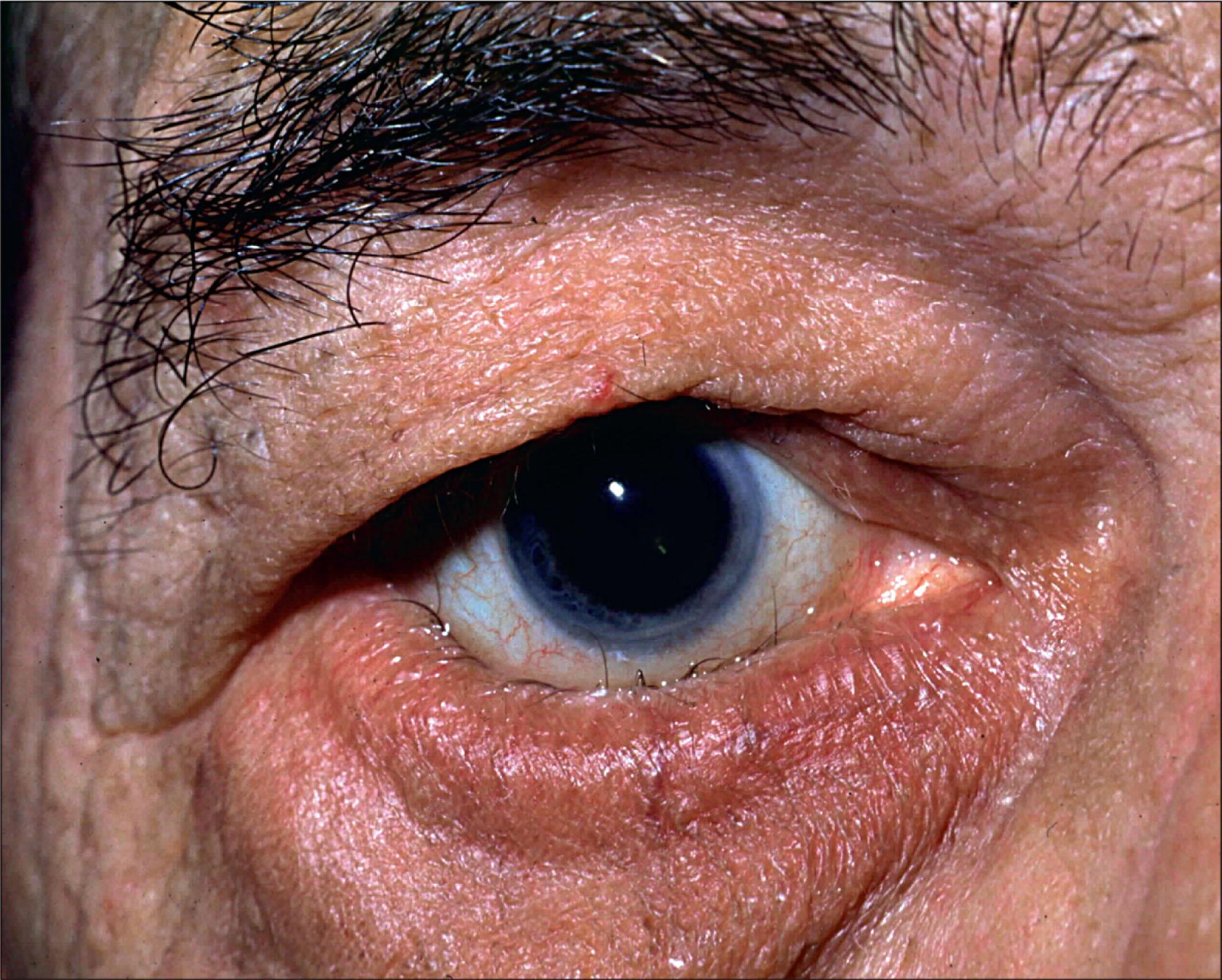Physical Address
304 North Cardinal St.
Dorchester Center, MA 02124
Entropion: a commonly encountered inward rotation of the tarsus and eyelid margin ( Fig. 12.5.1 ).

Symptoms and signs include ocular foreign body sensation, secondary blepharospasm, ocular discharge, tearing, superficial keratopathy, and corneal scarring.
The natural course often is progressive; early signs and symptoms may be intermittent.
Numerous corrective techniques for this eyelid malposition are reported; early publications reflected the failure to appreciate this condition’s pathophysiology, but more recent publications highlight variants of combination techniques.
The multifactorial pathogenicity includes tarsotendinous instability, tarsoligamentous laxity, capsulopalpebral fascia dysfunction, preseptal orbicularis muscle override, axial position of the globe, eyelid fat prolapse, and tarsoconjunctival foreshortening.
Surgical goals are to normalize eyelid function and appearance by determining the active pathophysiological factors and addressing their surgical correction.
Early procedures to correct entropion can be categorized as vertically shortening the anterior lamella (skin and orbicularis muscle), vertically lengthening the posterior lamella (tarsus and conjunctiva), and/or controlling lamellar rotation. Procedures involving horizontal eyelid tightening were popularized by Fox, Bick, and others. Wies described a procedure utilizing full-thickness blepharotomy and eyelid margin rotation. Despite the nonphysiological basis of this procedure, it gained wide acceptance because of its technical ease.
The mid-20th century heralded an anatomical approach to entropion repair. In 1963 the lower-eyelid retractor system was identified as pivotal in both the development and surgical correction of acquired entropion. Lower-eyelid retractor microanatomy and physiology were refined by Hawes and Dortzbach, Goldberg et al., and others. Orbicularis muscle functions in acquired and congenital entropion were clarified by Dalgleish and Smith, Tse et al., and Iuchi, and tarsal plate and canthal ligament physiologies were advanced by Benger and Musch, Shore, and Liu and Stasior. Finally, the importance of tarsoconjunctival support in entropion was contributed by Shorr et al. and Baylis and Hamako and led to improved posterior lamellar substitutes and grafting techniques by Swamy and others.
A complete ocular history, including all prior eyelid procedures, and physical examination are essential. The general medical history and physical examination may be critical in uncovering non-ocular manifestations predisposing to entropion development.
Capsulopalpebral fascia dysfunction is central to the evaluation of congenital and acquired entropion (see Box 12.5.1 and Chapter 12.1 ). Although the fascia clinically may appear disinserted or dehisced from the inferior tarsus, histological analysis demonstrates the capsulopalpebral fascia to instead be attenuated or only partially dehisced. Clinical observations that identify lower-lid retractor dysfunction include a higher eyelid margin resting position in primary gaze and an increased ability to passively distract the lower eyelid upward. Although some authors have stated that capsulopalpebral fascia dysfunction can result in a reduced vertical eyelid excursion, Benger and Musch found lower-lid excursion to be normal, similar to the normal upper-eyelid excursion observed in patients with aponeurogenic blepharoptosis.
Higher eyelid resting position in primary gaze
Increased passive vertical eyelid distraction
Increased depth of inferior conjunctival fornix
Presence of a white infratarsal band
Enhanced distraction of the eyelid from globe
Exophthalmometry
Presence of thickened pretarsal soft tissue
Vertical height of tarsal plate
Presence of cicatrizing conjunctival disease
Assessment of Marked Orbital Fat Prolapse
In cases of retractor dysfunction, the inferior fornix depth often increases, as measured against the contralateral fornix depth in unilateral entropion or against a normal inferior central fornix depth of 11 mm. In selected cases, the disinserted edge of the capsulopalpebral fascia can be observed as a white band beneath the palpebral conjunctiva.
Several studies suggest that age-related horizontal lower-lid laxity especially occurs in patients who have chronic entropion. Histopathological studies of eyelids manifesting entropion demonstrated collagen degradation and loss of elastic fibers affecting multiple eyelid tissues, including the tarsus. This can lead to loss of tarsal integrity and physiological failure of the lateral canthal ligament.
Another determinant of tarsal position is the appositional pressure between the eyelid and globe. This depends, in part, on the relative position of the globe. Several studies have identified reduced axial globe length as a factor predisposing to the development of involutional entropion.
Several investigators have demonstrated a superior migration of the preseptal orbicularis subunit toward the inferior tarsal margin in patients manifesting entropion. It is unclear whether this muscular bunching is a primary phenomenon or epiphenomenon. The clinical evaluation for preseptal orbicularis override is subjective and requires assessment with the eye in the primary gaze position, after a spontaneous blink, and following forceful eyelid closure. Early in its onset, entropion may manifest only intermittently. In such cases, the use of a provocative test may prove helpful in eliciting the condition during examination.
Become a Clinical Tree membership for Full access and enjoy Unlimited articles
If you are a member. Log in here